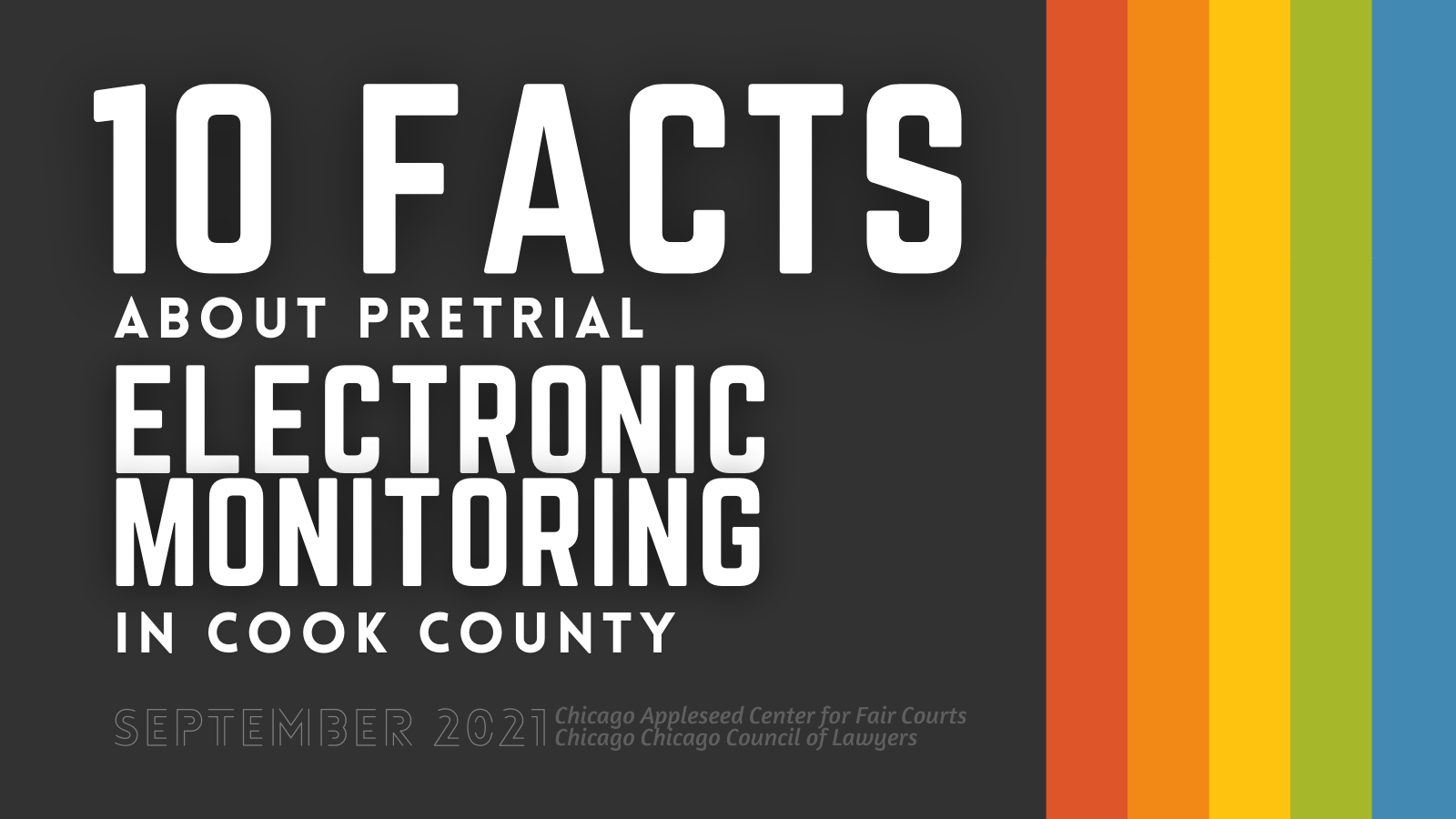REPORT: 10 Facts about Pretrial Electronic Monitoring in Cook County
The Chicago Council of Lawyers and Chicago Appleseed Center for Fair Courts have released a report, 10 Facts about Pretrial Electronic Monitoring in Cook County, which catalogs data-based facts about the Cook County Sheriff’s Electronic Monitoring (EM) Program to help the public understand the breadth of this program and to make a determination as to whether it is worth the millions of dollars taxpayers spend each year to maintain it.
There are two pretrial electronic monitoring (EM) programs used for accused people in Cook County. The larger of the two, and the subject of this report, is run by the Cook County Sheriff’s Office (CCSO). This program, originally created in the late-1980s to help with jail overcrowding, has monitored over 300,000 people since its founding. The second of Cook County’s electronic monitoring programs is the Home Confinement Unit run by the Adult Probation Department’s Pretrial Services Division under the Office of the Chief Judge (OCJ). There is no public information available about the details of the Pretrial Service’s Division’s electronic monitoring program, which makes it impossible to analyze that program in any detail; our analysis provides a comprehensive evaluation of public data, focusing solely on the Sheriff’s EM Program.
Electronic monitoring is a form of incarceration, not an alternative – it requires people to wear radiofrequency (RF) or GPS devices and stay confined in their homes 24/7. As the current policies in Cook County note: “The Sheriff’s EM program is a home detention program. Accordingly, you must remain inside your home twenty-four hours per day unless prior permission for movement has been granted by the court and verification has occurred from the Sheriff’s Office.”
Currently, over 8,700 people in Cook County are on electronic monitoring or in Cook County Jail. For the first time in years, the total number of people incarcerated in Cook County is steadily growing, not shrinking, with people being surveilled longer than ever although most people do not violate pretrial conditions put in place by a judge.
Our findings show, among other things:
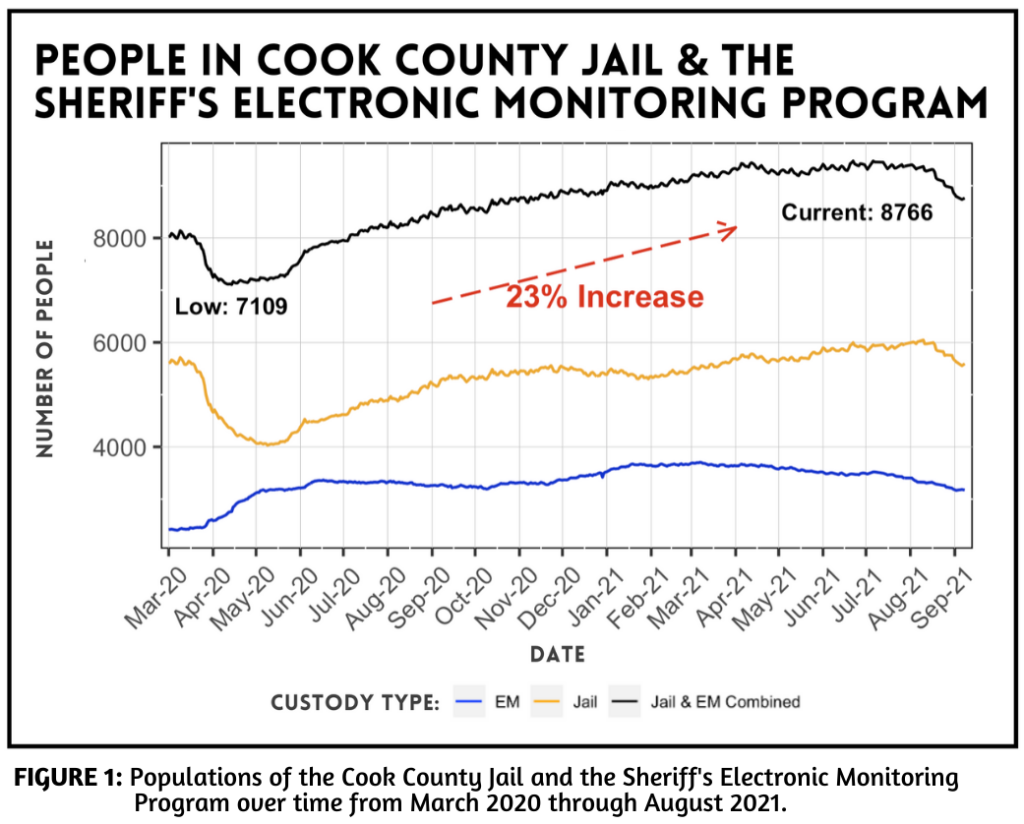
FACT 1: The number of people incarcerated in Cook County Jail or on electronic monitoring (EM) has risen 23% since April 2020.
As court proceedings have slowed during the pandemic, people are spending longer and longer periods of time on electronic monitoring. In August of 2021, there was a notable decline in the EM population – this progress must be maintained. Even with this decrease, however, the electronic monitoring population alone remains 31% higher than it was in March of 2020.
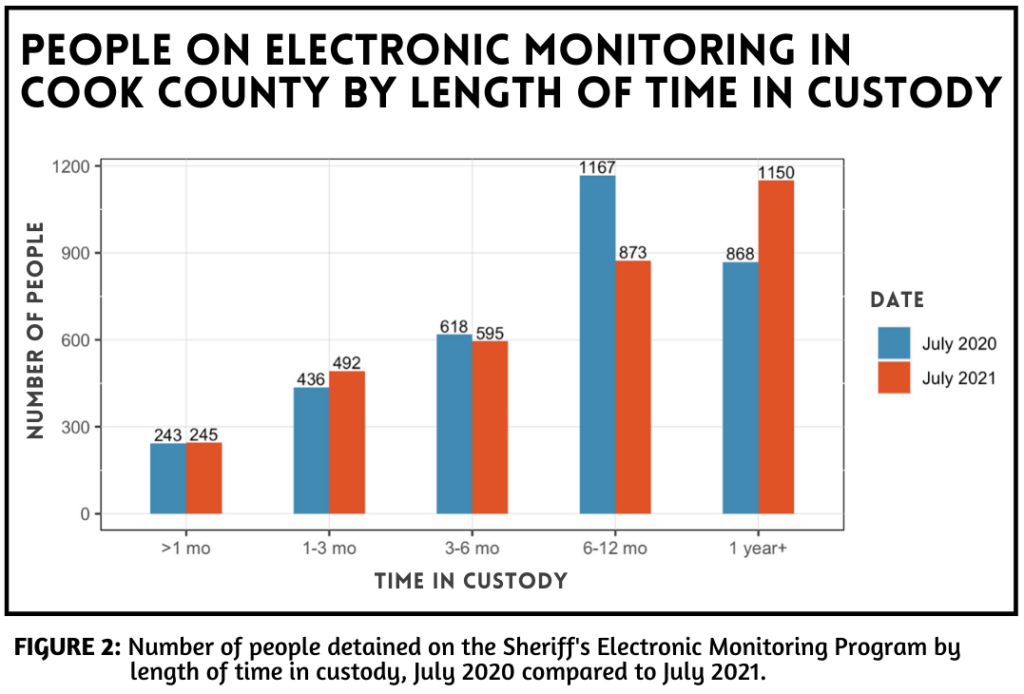
FACT 2: In Cook County, over 1,100 people have been on EM for a year or more; 78% have been detained for over 3 months.
Currently, 1,150 people in the Chicago area are on electronic monitoring and have been for over a year. This is 32% higher than the same time last year. At least 78% of people on the Sheriff’s EM have been detained for at least 3 consecutive months.
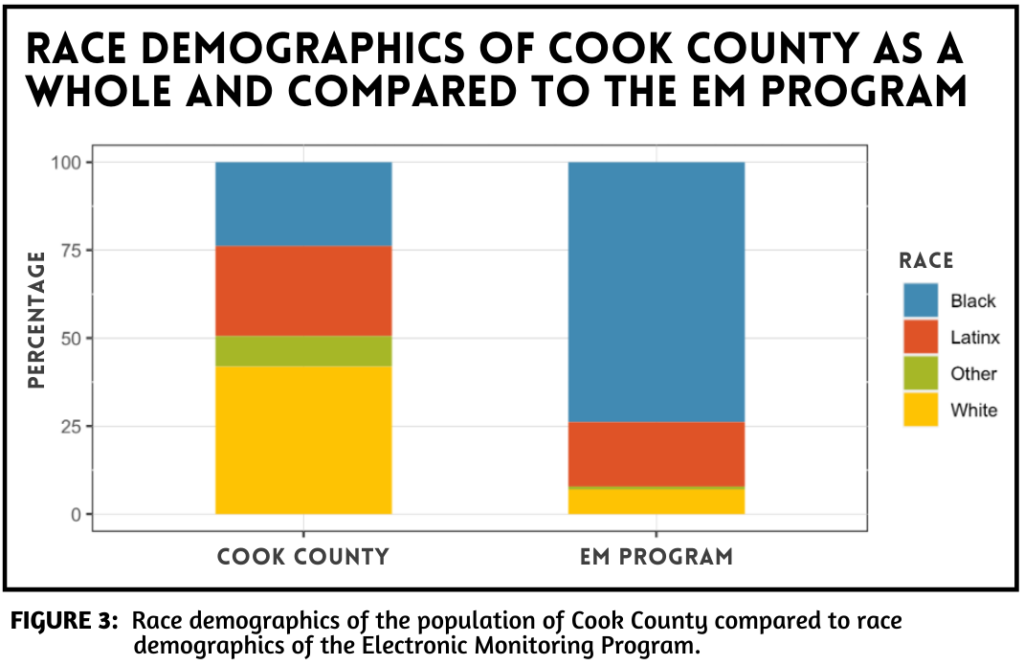
FACT 3: Only 23% of Cook County’s population is Black, but over 74% of those on electronic monitoring (and in jail) are Black.
It is common knowledge that the criminal legal system harms Black communities at a massively disproportionate level. Electronic monitoring is another facet of this system that mostly impacts Black – and to a lesser extent Latinx – families and communities in and around Cook County and throughout the country.
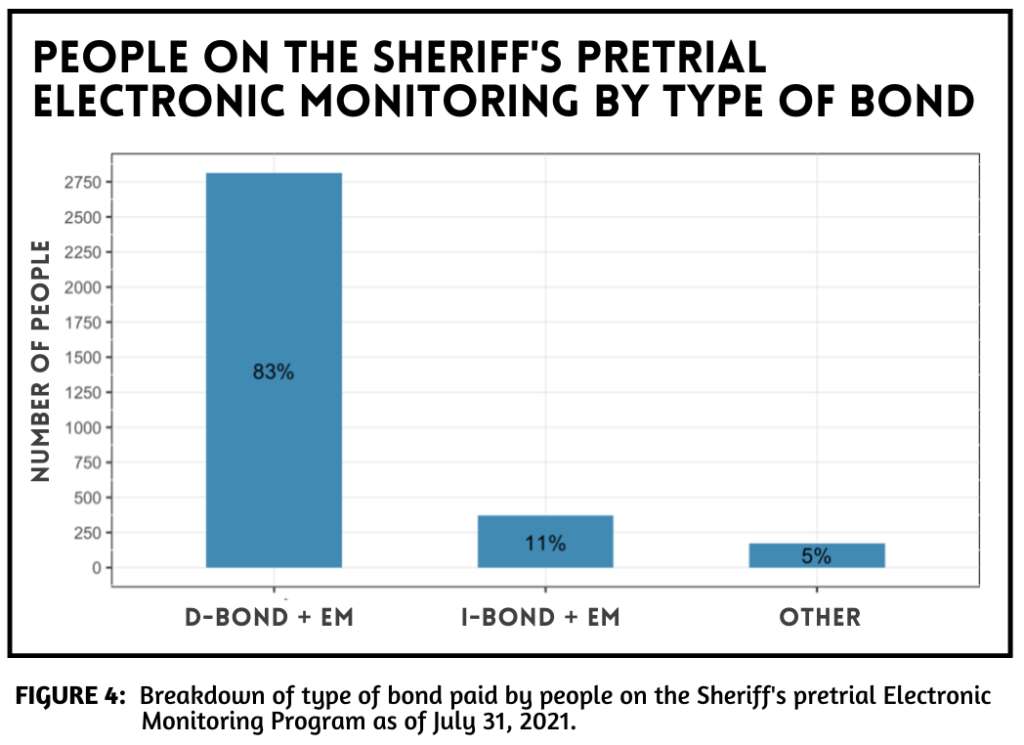
FACT 4: Today, 83% of the people on EM in Cook County had to pay a money bond to leave jail and be placed on electronic monitors.
As of July 31, 2021, about 83% of the people on electronic monitoring in Cook County (2,821 of 3,357 people) were marked as having paid a D-Bond (10% of the full bond amount) with electronic monitoring, meaning they had to meet both conditions in order to leave the jail and begin house arrest.
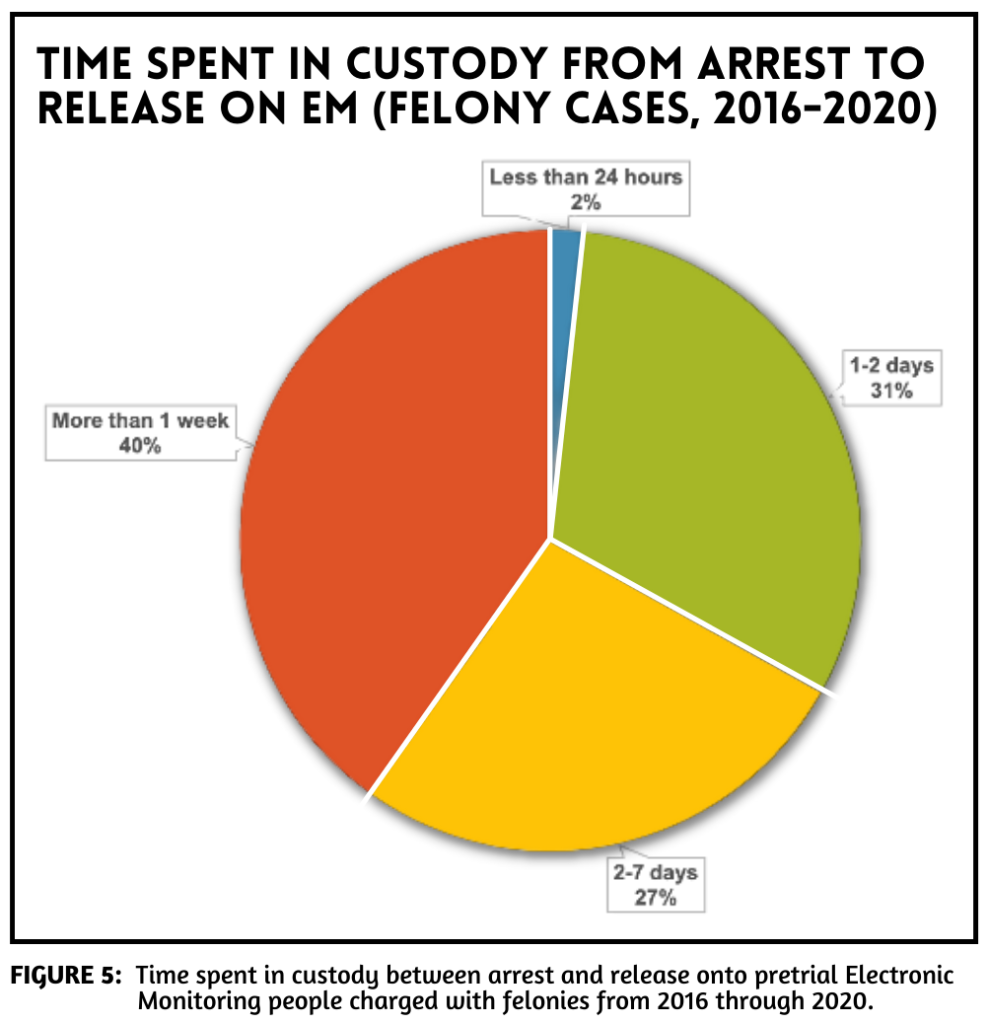
FACT 5: An average of 67% of people spend over 2 days in jail before getting out on EM, threatening jobs, school, family, and more.
Over two-thirds of the people who spent 24 hours in jail after being arrested by the Chicago Police Department (CPD) were there for at least 2 days before beginning electronic monitoring; 40% of these people were in Cook County Jail for over a week.
These delays wreak havoc on people’s lives. Although some believe that EM allows individuals to continue activities of daily living, such as working, the disruption caused by delays before release threatens people’s ability to keep their existing employment.
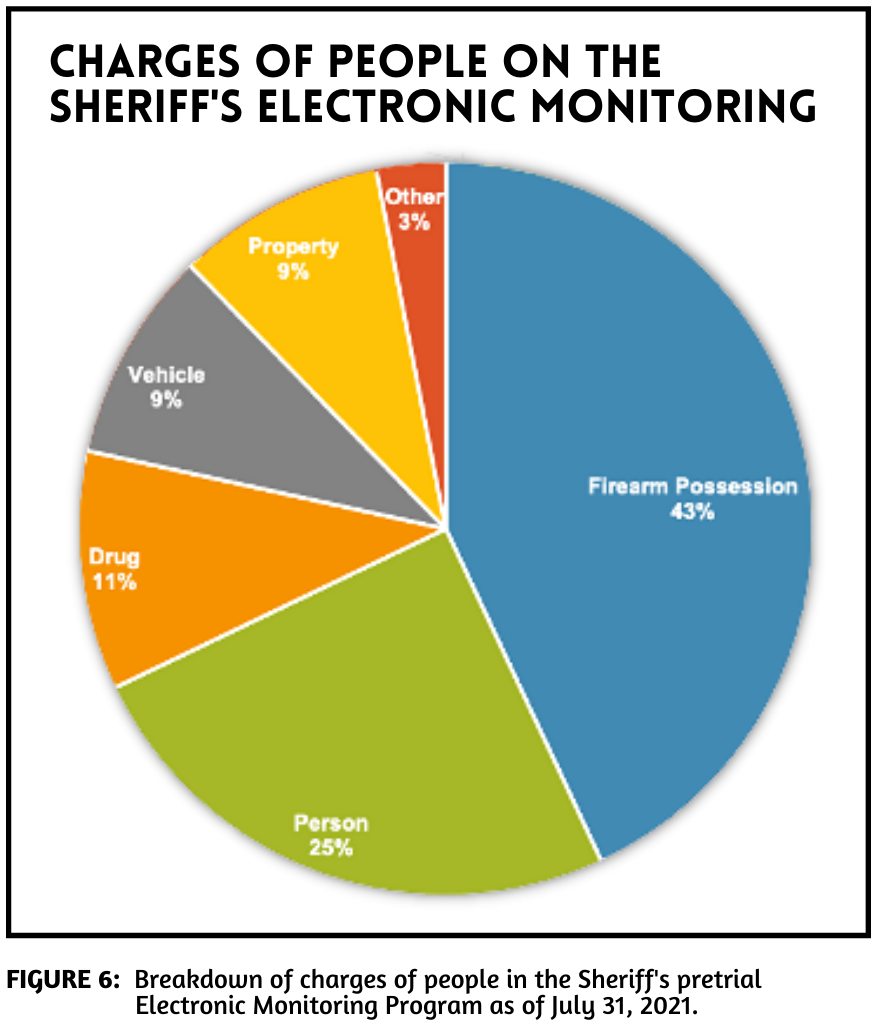
FACT 6: Most people on pretrial electronic monitoring in Cook County over 75% – are facing “non-violent” or low-level allegations.
Gun possession without a license is a misdemeanor in most states, or no license is required at all. In Illinois, it is a felony that carries a mandatory minimum prison sentence. Over 45% of all people on EM in Cook County have, as their highest charge, a gun possession allegation that did not harm anyone. The most common firearm-related charge for people on EM is “Aggravated Unlawful Use of a Weapon,” which, despite the misleading name, does not involve firing, brandishing, or even necessarily touching or holding a gun. Instead, it refers to “possession” of a gun by any person who is not appropriately licensed by the state.
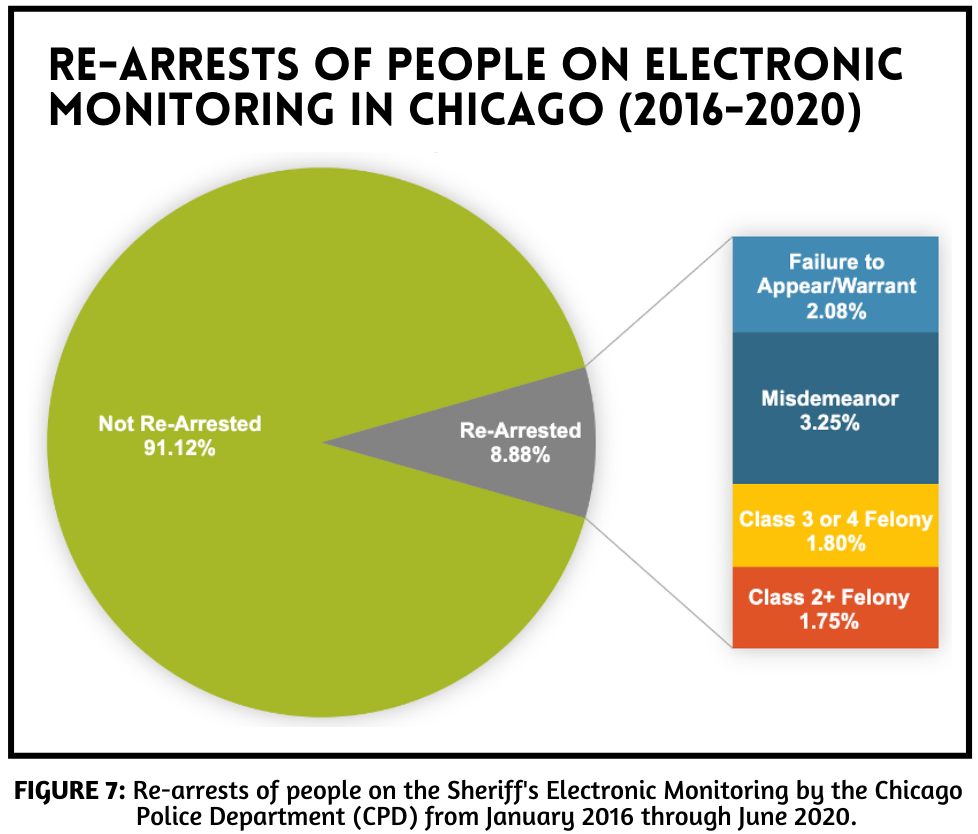
FACT 7: Less than one in twelve people in Chicago are arrested for new allegations while on pretrial electronic monitoring.
Between 2016 and 2020, there were about 18,229 people in Cook County (serving a total of 23,014 pretrial periods) who spent some period of time on EM through the Sheriff’s Office. Over 90% of these people were not rearrested while on electronic monitoring.

FACT 8: Re-incarcerations for technical violations (rather than for new arrests) are four times higher in 2021 than in 2019.
People on EM can be re-incarcerated by the Sheriff’s Office if they are alleged to have broken the rules of the program by leaving their homes when they were not authorized to do so. These are technical violations; people can be violated for being late returning from work, going to a doctor’s appointment or the hospital without authorization, or taking out their trash.

FACT 9: Data suggests that electronic monitoring has no meaningful effect on the likelihood of re-arrests or appearances in court.
As is also true of people awaiting trial without electronic monitoring, most people (82%) show up to all their court dates and only about 17% are taken back into custody for some reason while released – this includes arrests for alleged misdemeanors, ordinance violations, and failures to appear in court.
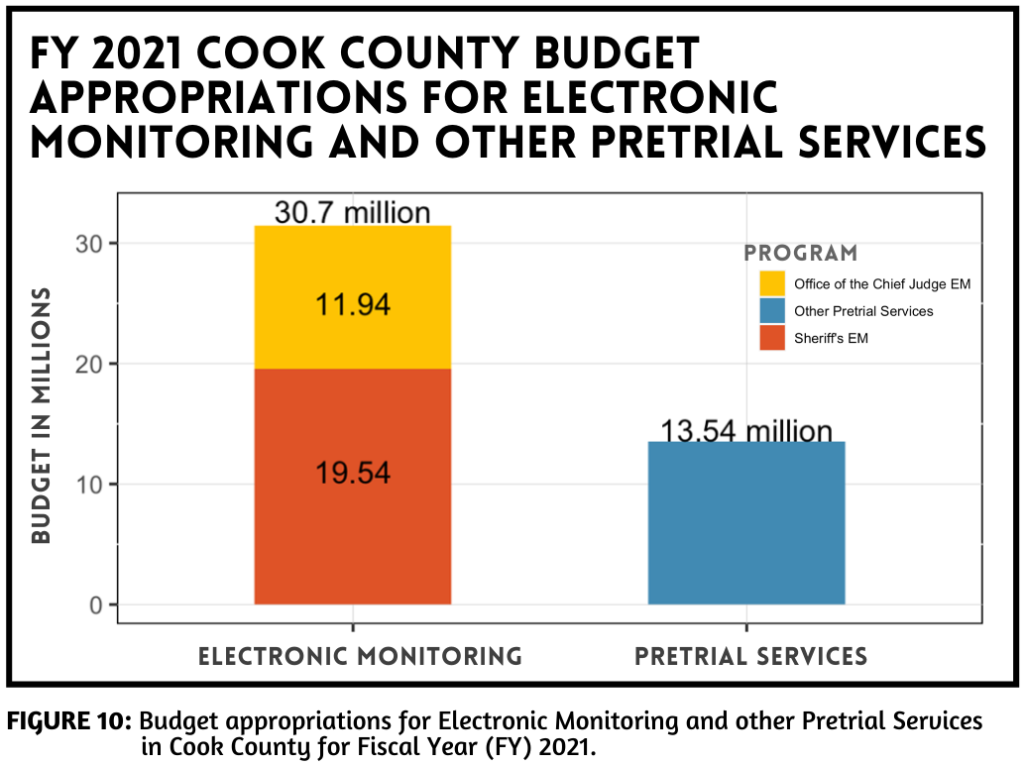
FACT 10: Despite the harms and lack of evidence, Cook County taxpayers spend $19.5 million annually on the Sheriff’s EM program.
In 2021, Cook County taxpayers paid $19,542,855 for the Sheriff’s Community Corrections Department and another almost $12 million for the Adult Probation Department’s Pretrial Services Division’s electronic monitoring program.
Electronic surveillance appears to perpetuate racial disparities in the criminal legal system and destabilize communities without a return for public safety. Although EM has been a fixture of the criminal courts for over 30 years, it has not shown any significant benefit to the public that would justify such a large budget appropriation.
Cook County should prioritize investments in grassroots, non-court-related services to support people involved in the criminal legal system that are led by and based in communities. Electronic monitoring is an expensive, oppressive, and ineffective program. The time for shrinking the program’s size and budget, and for re-evaluating the way Cook County provides pretrial services, has come.
Read the “10 Facts about Pretrial Electronic Monitoring in Cook County” report here.
The “10 Facts” report was researched, written, and all data was analyzed by Sarah Staudt, Senior Policy Analyst & Staff Attorney, and was edited and prepared by Stephanie Agnew, Pro Bono & Communications Coordinator, on behalf of Chicago Appleseed Center for Fair Courts and the Chicago Council of Lawyers.

